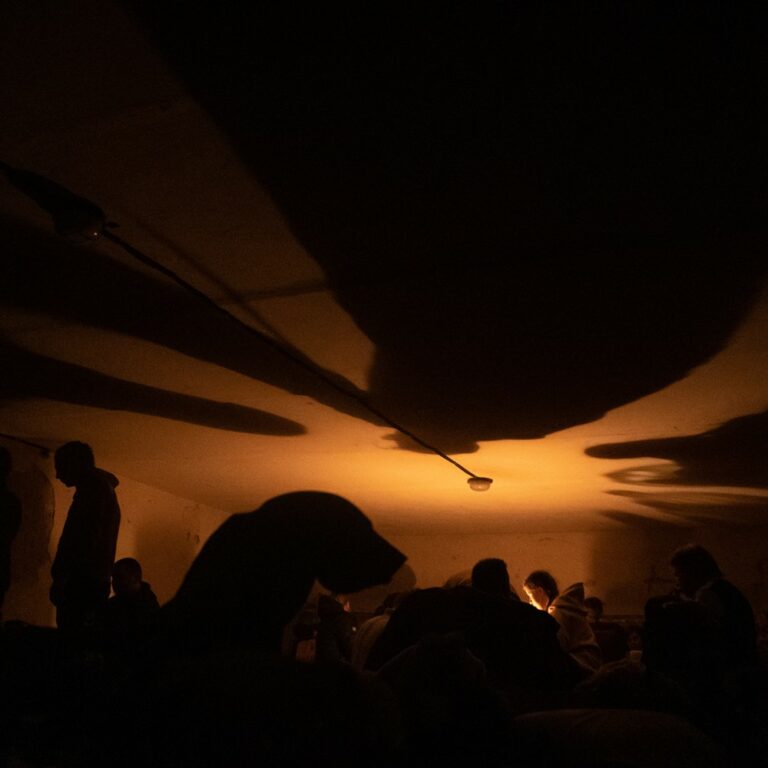
Bucha, Irpin, Hostomel — names of these small towns in the outskirts of Kyiv are now known all over the world. It was there that the first brutal mass murders of Ukrainians were discovered, committed by the Russian military that launched the full-scale war on February 24, 2022.
In March, fierce battles continued for the localities of Kyiv Polissia where the invaders concentrated their attacks. These territories were liberated by the Armed Forces of Ukraine at the beginning of April, but a little more than a month of Russian occupation became a real trial and tragedy for the locals. They found themselves mostly without connection, with uncertain prospects for evacuation, and most importantly — very close to the cruel enemy that was mercilessly destroying both the city and its peaceful inhabitants.
Videographer and photographer Oleksandr Popenko and his girlfriend were in Bucha when the full-scale invasion began. They spent several fearful weeks in the occupation, and fortunately, made it to Kyiv. Oleksandr documented his experience and how the town changed beyond recognition in a matter of days. He managed to save these photographs. We published Oleksandr’s photos, as well as his memories of the beginning of the great war.
On the eve of the full-scale invasion, I moved-in with my girlfriend Oksana Semenik into her apartment in Bucha. The first photo that I took on February 24 was the view from our balcony on Sklozavodska street. We gathered our valuables, and taped the windows. We moved the mattress into the hallway, and spent the first night at home trying to take turns sleeping but it was in vain. The following day we relocated to the basement, returning home very rarely — only to pick up something or to wash up while water supply was still available. Every time I returned to the apartment, I took a similar photo. Thanks to that, I can now recall how many times we went home and when.
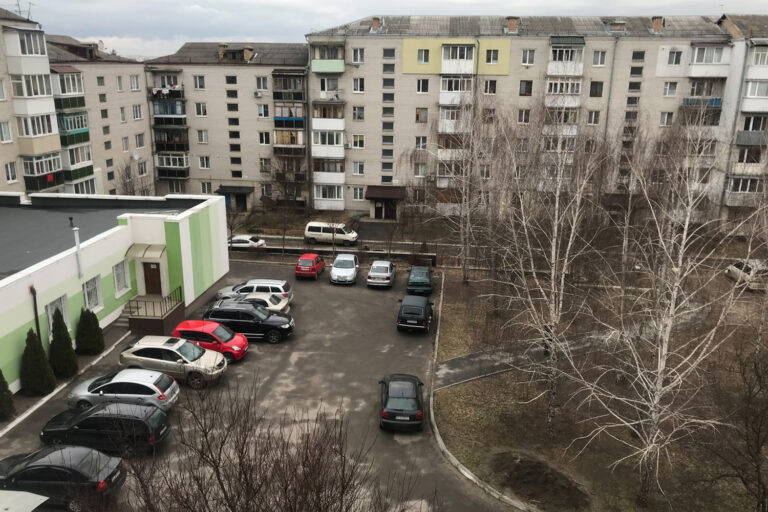
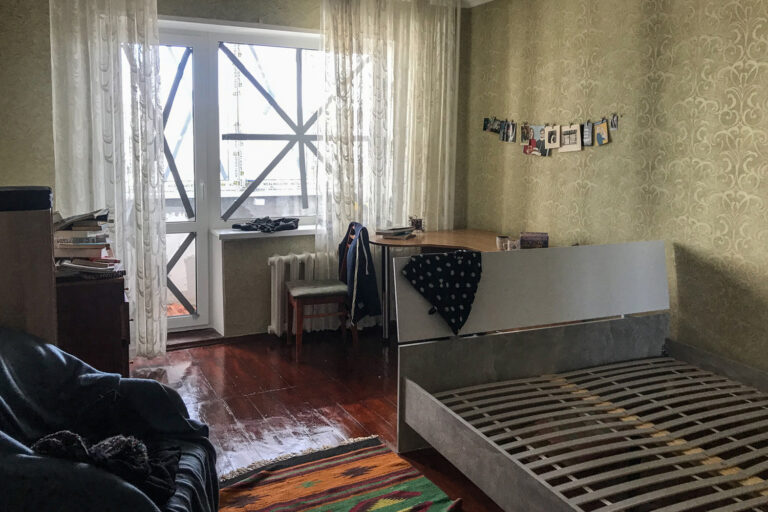
slideshow
On February 24, we went to scope out the bomb shelters in the district. Most of the basements were cluttered and hardly suitable for any kind of habitat.
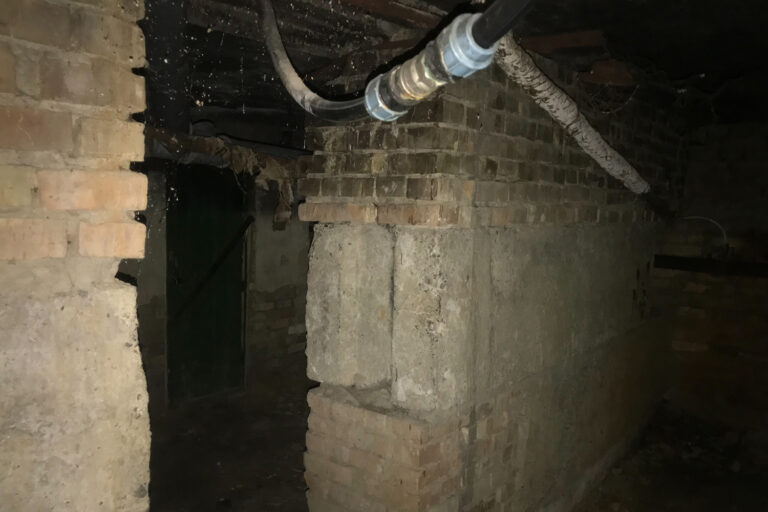
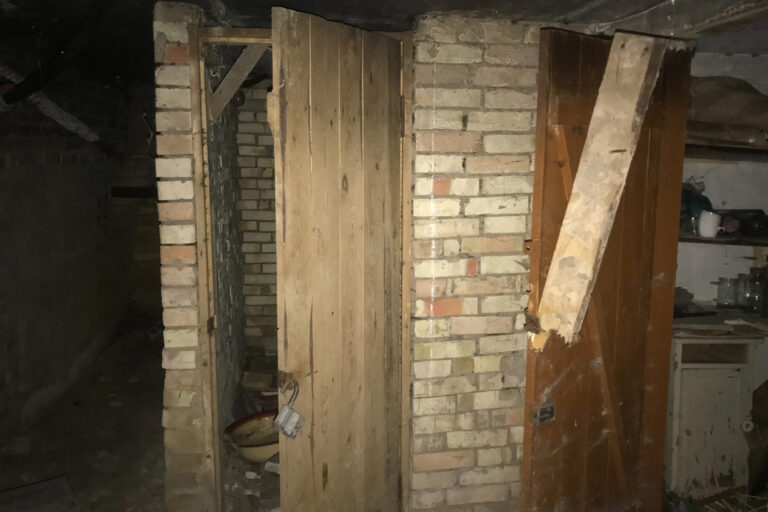
slideshow
Finally, we found a suitable basement in the kindergarten not too far away.Oksana and I got engaged there.

Shops in the district tried to remain open during the early days of the invasion. A sales associate opened the pet store daily, at least for a few hours, and even offered discounts. They stayed open for a short period of time, and a queue of customers formed immediately. I took this photo on February 28, on my way from home to the basement.

Sometimes I would take selfies in the mirror to document what I looked like. Two weeks after we get out of Bucha and I step on the scale, it will show a 10 kg weight loss.

As long as there was electricity, there were options for spending time in the shelter — the children were occupied with colouring books and the Uno card game. There were less problems with food — at least there was a power outlet in the basement and we could boil some water. In addition, when the supermarket Novus in the centre of Bucha was bombed, a group of kind people saved the remaining goods and distributed them to the basements.
There were many pets in the bomb shelter, and our cat Vatrushka was among them. Oksana brought her book “Toreadors from Vasiukovka” by Vsevolod Nestayko. I also had a book but I hadn’t read any pages. Most of the time, while there was internet, I monitored the news like the majority of the people in the basement. There was little news about Bucha so we had no idea what to do – remain in the shelter or try to leave. Besides, the news about the blown up bridges did not provide an understanding of what route to take.
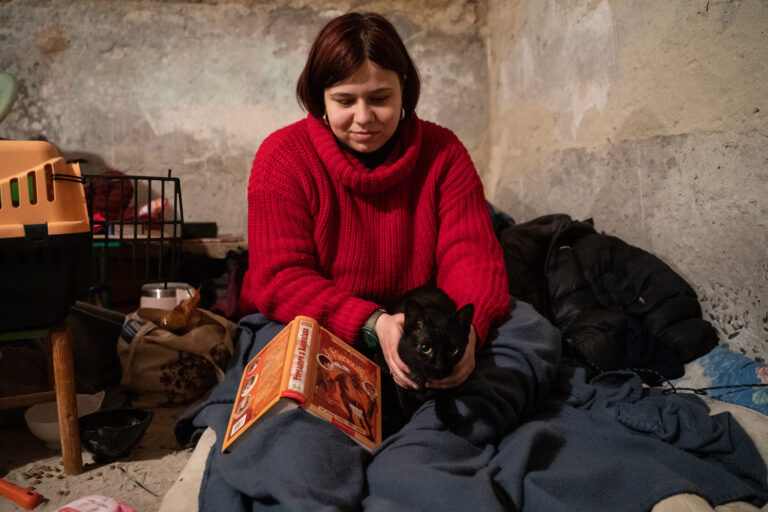
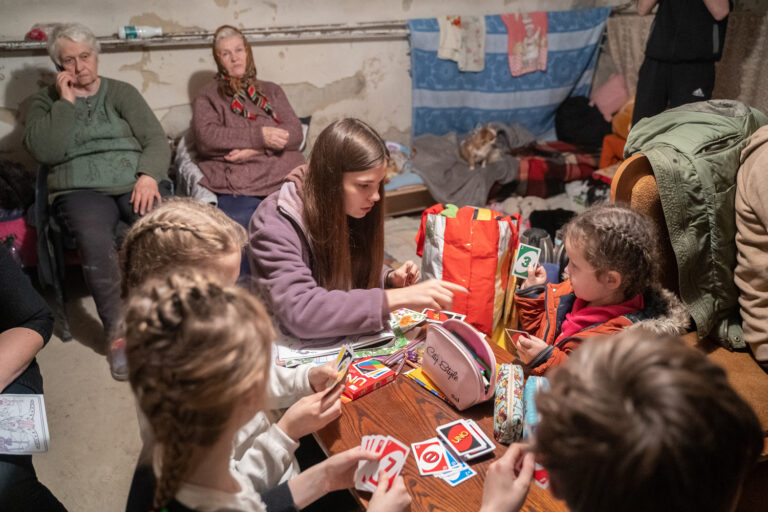
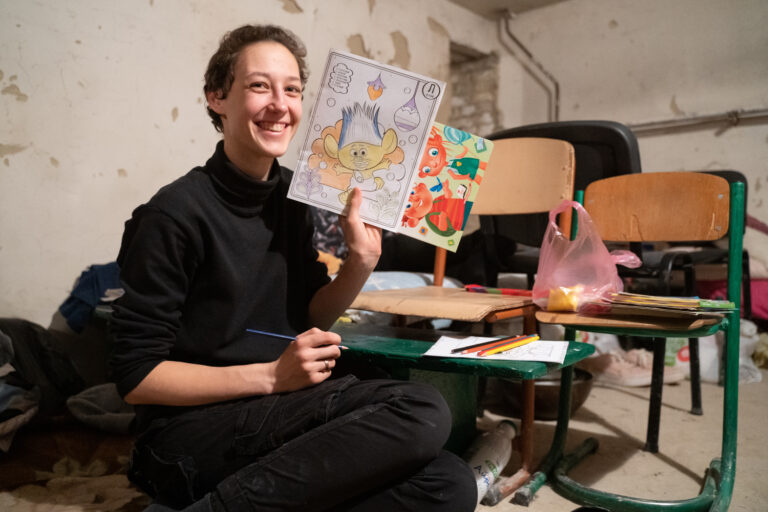
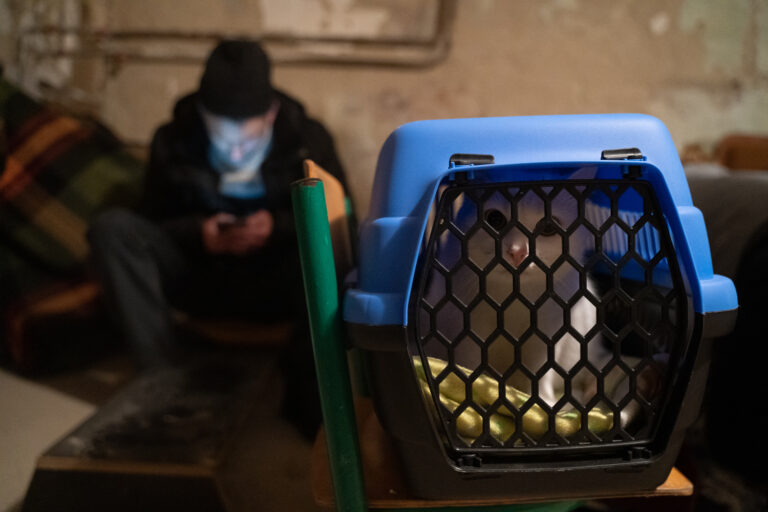
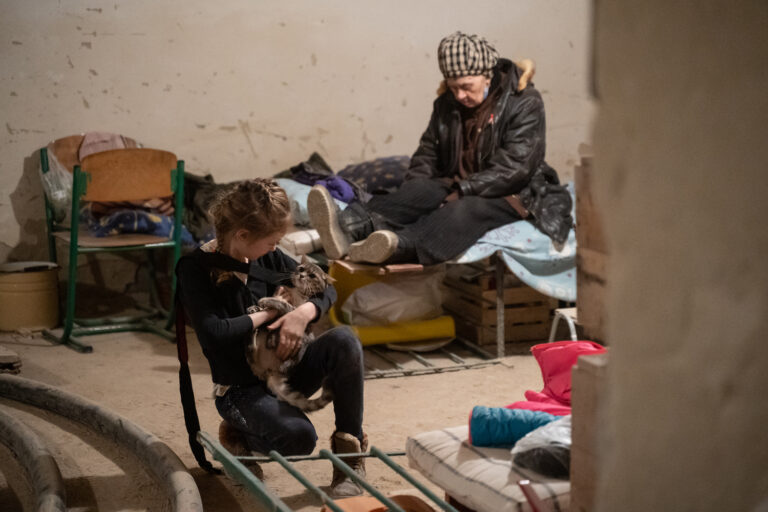
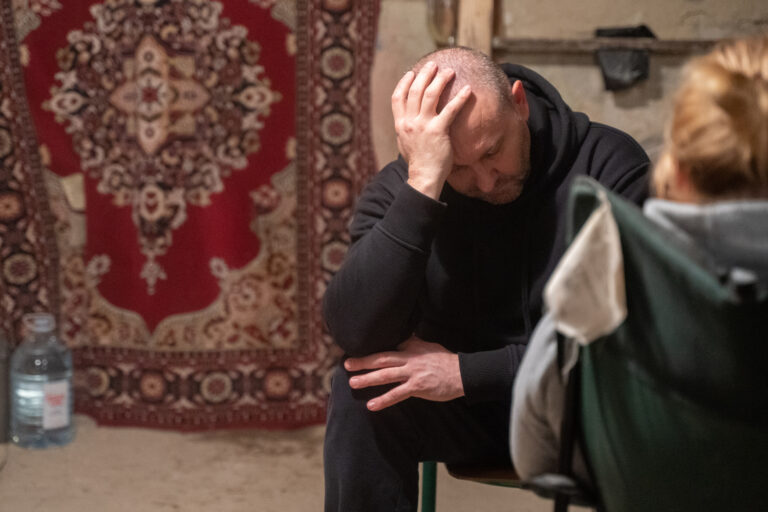
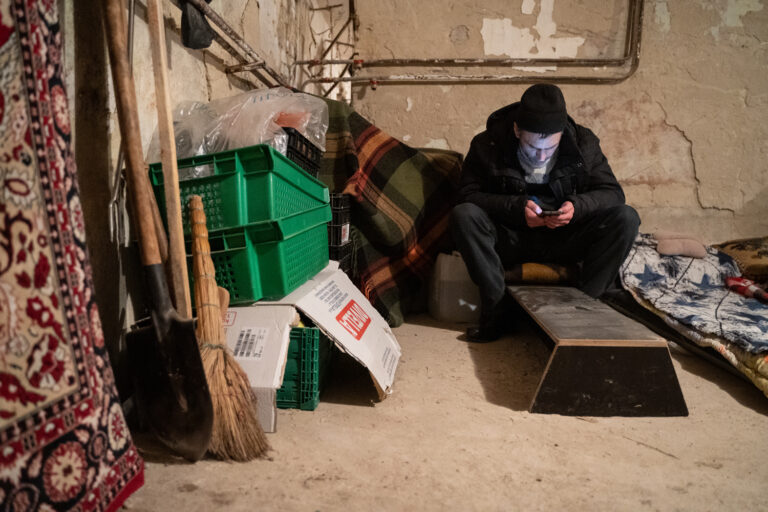
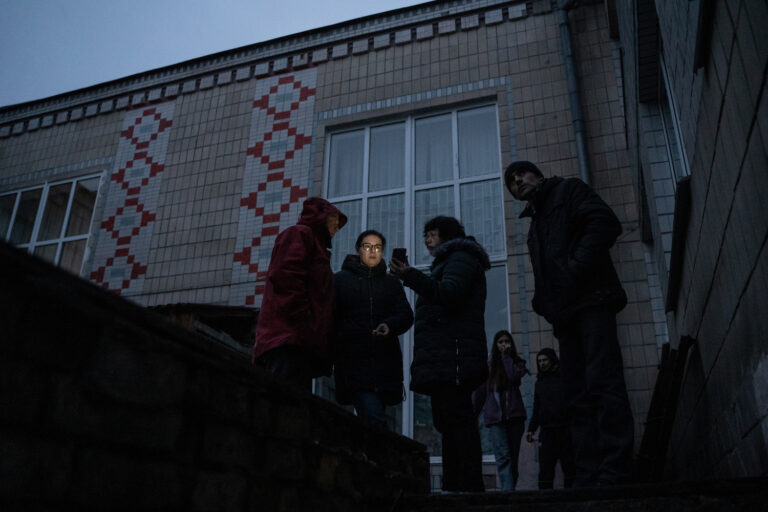
slideshow
The last time we were at home was on March 3. The morning was relatively calm so we decided to shower and have a normal meal. Besides that, we went home for the sake of the cat so she could run around a bit, because in the basement she spent most of the time in her carrier. I made coffee and shakshuka. We were just about to sit down to eat when Vatrushka threw herself into the carrier which is not typical of her. Oksana perceived it as a sign so we got dressed immediately to return to the basement. In these 10-15 minutes, while we were getting ready and walking to the kindergarten, we could already hear the sounds of the heavy Russian equipment entering our district. We believe the cat saved our lives. The occupation of Sklozavodzka street began that day.
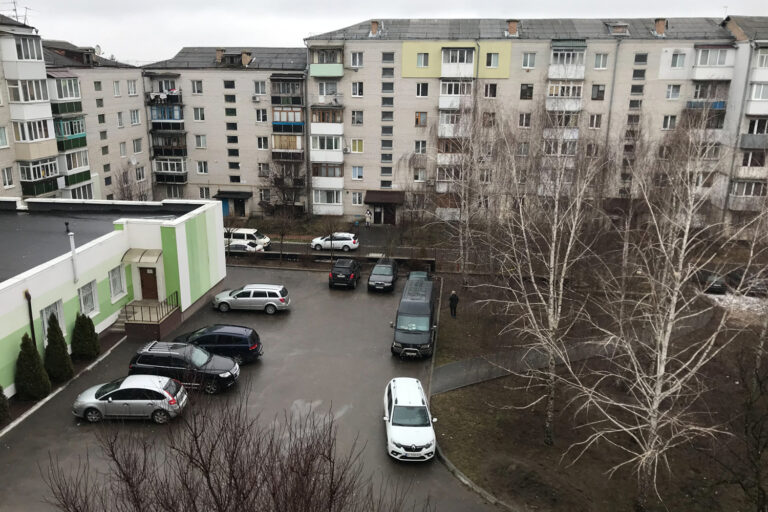
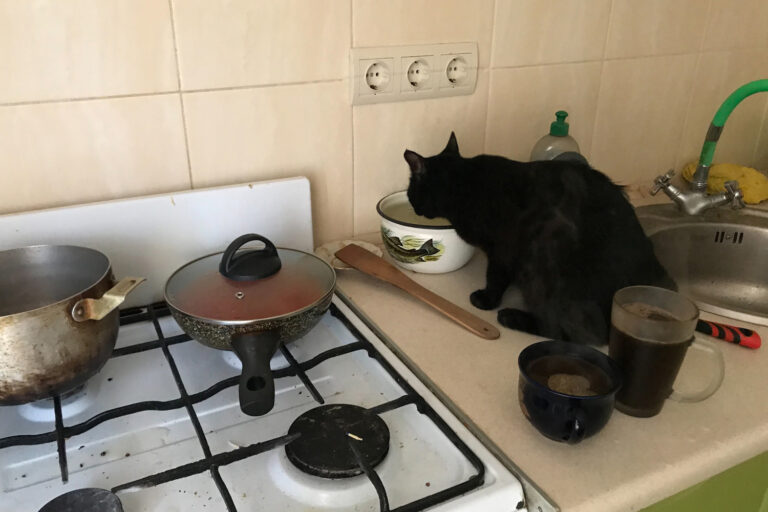
slideshow
The first thing that the Russian military did when they entered the district was destroy all utilities — water supply, electricity; and phone service became very bad. During the early days of their presence on Sklozavodska street, we did not leave the basement at all, and the door was kept locked from the inside. We opened the door on March 6 – three days after the occupiers entered our neighbourhood.

Life in the bomb shelter had changed a lot. As soon as people found the courage to leave, they rushed to collect the food in the freezers. They found firewood, brought a folding grill, and made a makeshift kitchen near the shelter. For several days there was a bit too much food — everything that perishes quickly had to be eaten. We still had some supplies of water but everyone understood that it had to be conserved. As soon as it snowed, we started collecting the snow into containers.
There was almost no phone reception. You could occasionally send a text message or make a call if you left the shelter to find a connection. Oksana had an Android that comes with a standard radio app. Radio NV – the only radio station that could be heard clearly – was our connection with the outside world.
Parents of mine and Oksana’s got acquainted for the first time when we were in the shelter. Oksana managed to call her mom from our neighbours’ phone and gave her my mother’s phone number so that she could notify her that we are ok. The children in the basement played pretend to be doctors.
A few people had lanterns, and they tried to conserve their phone battery. They didn’t have time to stock up on candles either. So they remembered old recipes from the 90s — it was a discovery for me.
For a homemade candle, you will need a potato, a knife, a piece of bandage, a plate, and vegetable oil. Cut a potato in half, make a hole in it, insert a piece of bandage, put it in a plate with oil and light it – it will work as a wick. This composition stinks a little and is smokey but it glows for a long time and quite brightly.
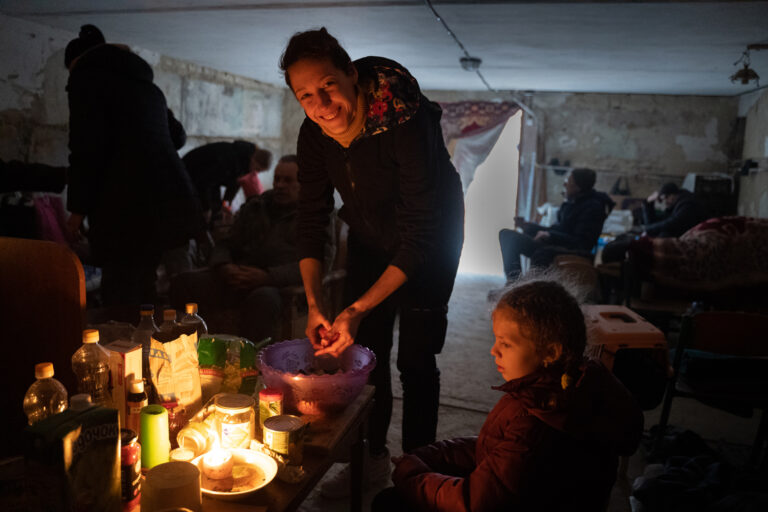
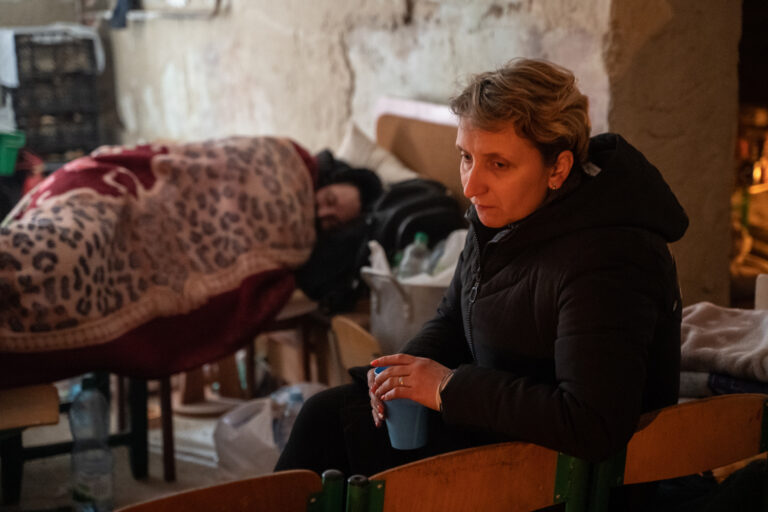
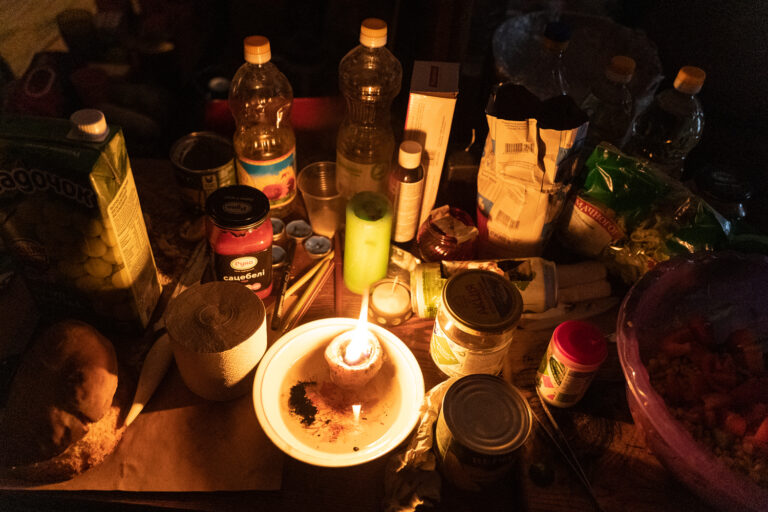
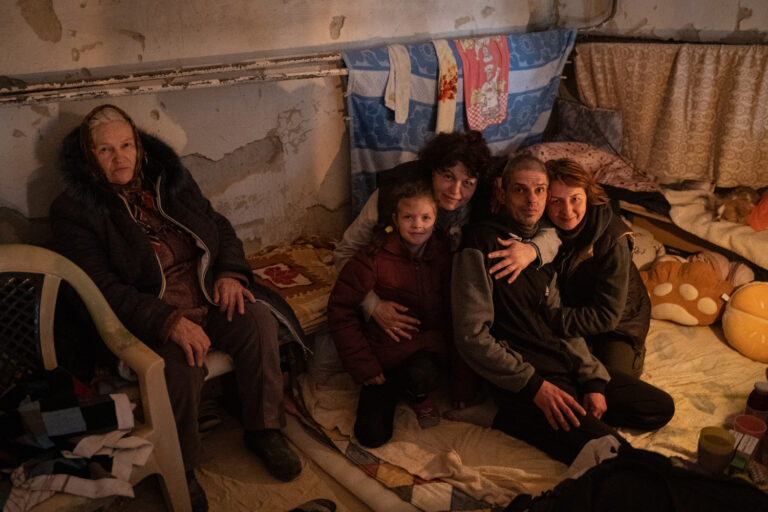
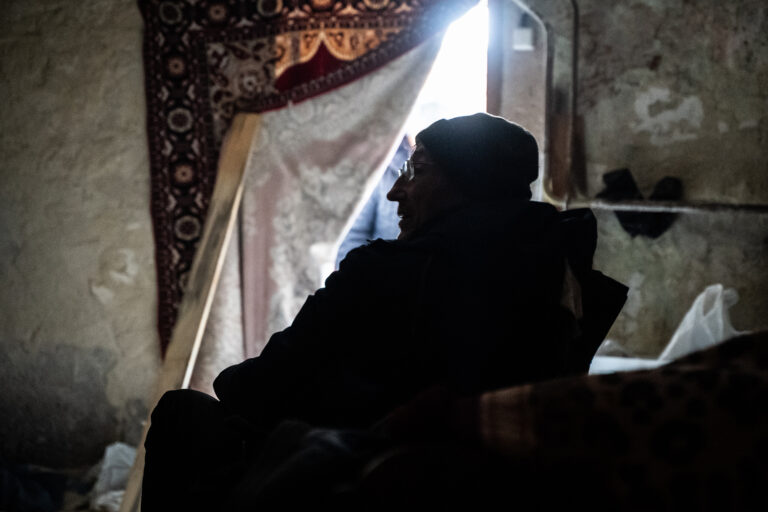
slideshow
On March 7th, I took the risk to get out of the basement together with the neighbours and take a walk around the neighbourhood. That’s when I saw the direct consequences of the occupation — damaged water tower, ransacked shops and pharmacies, and damaged residential buildings. Our apartment wasn’t spared either – from the street I could see a direct hit on our balcony.
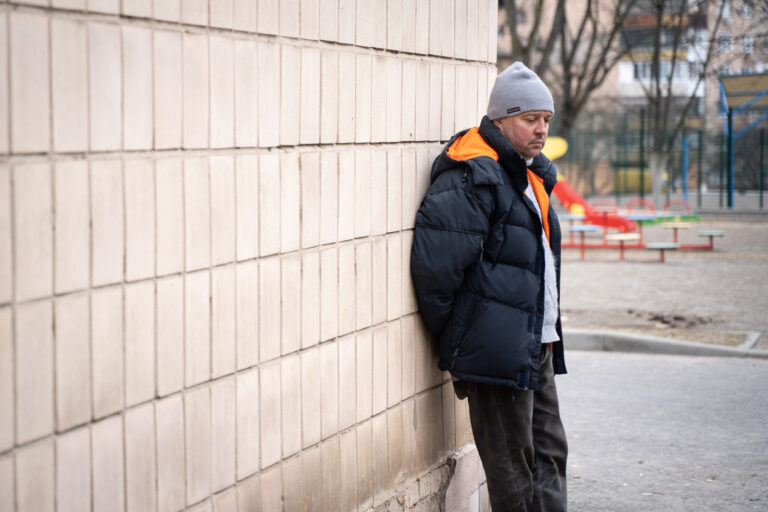
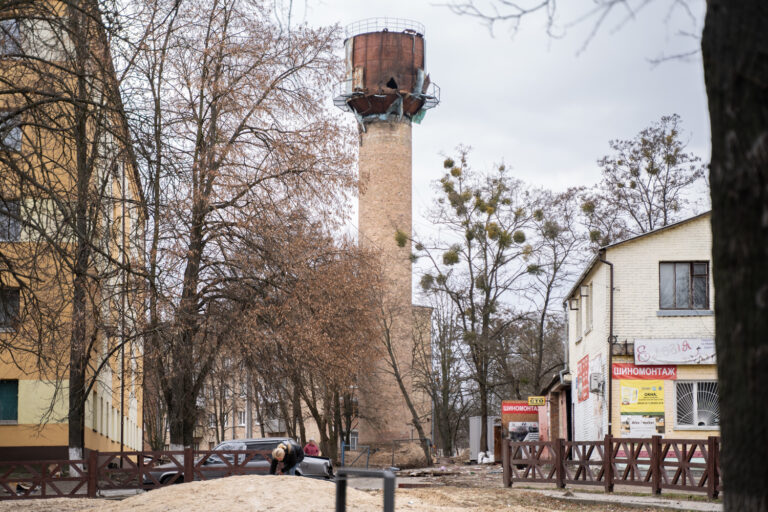
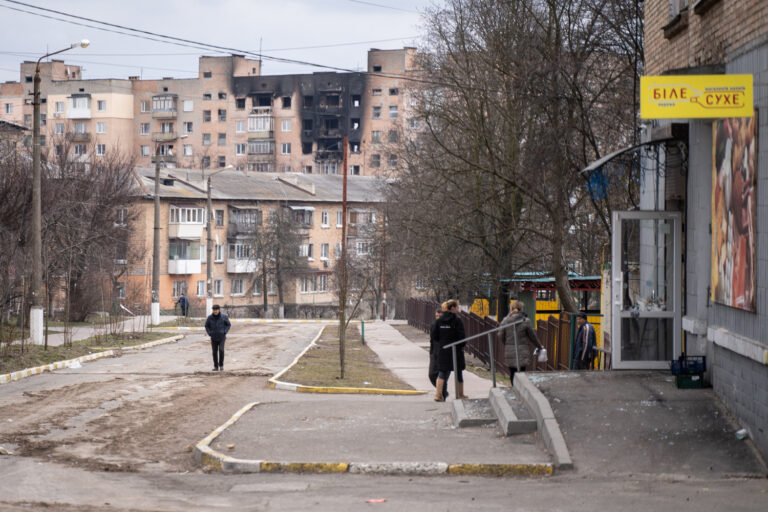
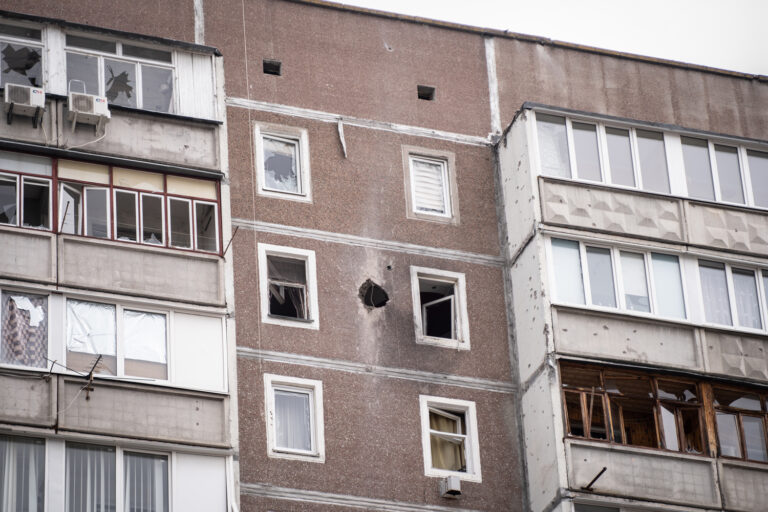
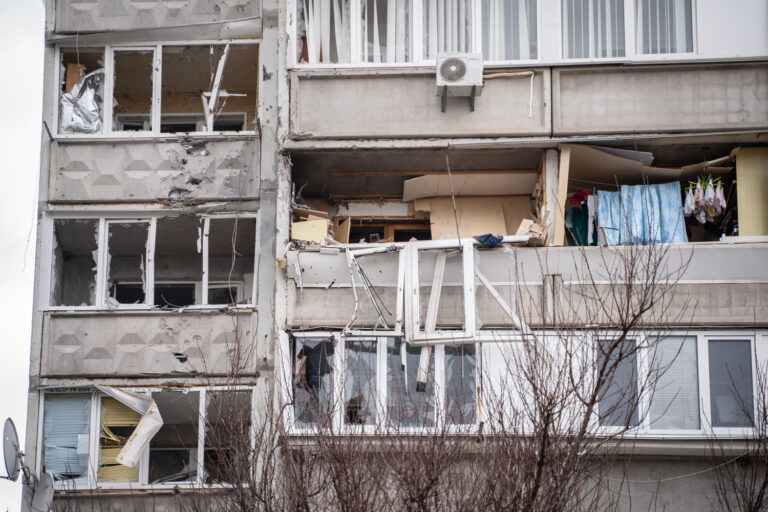
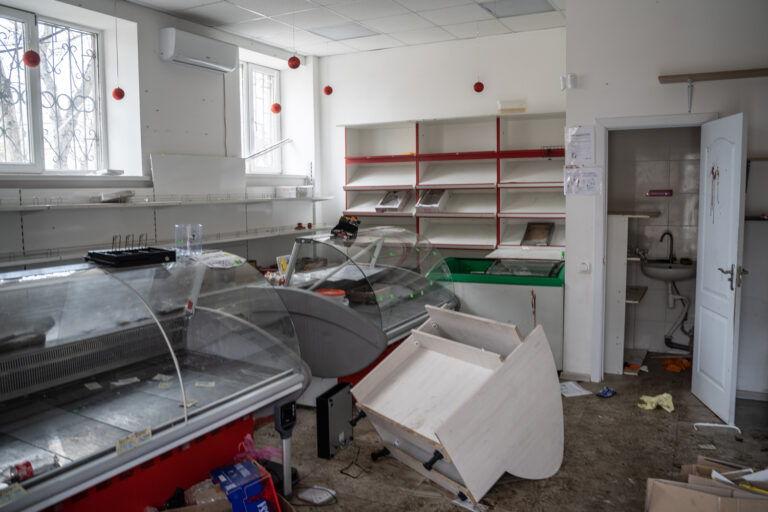
slideshow
On March 9th, we received news that the “green corridors” are opening up, and there is a passage across the bridge in Irpin, not far from Romanivka village. People began to evacuate from Bucha that same day. We were extremely nervous and couldn’t decide whether it was worth the risk. We spent the whole day feeling this way.
HUMANITARIAN OR “GREEN CORRIDOR”
A temporary demilitarised zone intended for humanitarian aid transit to a crisis region and/or evacuation of refugees.In the morning of March 10, it was clear that there would not be another chance — dozens of people began to gather outside the neighbouring buildings, ready to leave the occupied Bucha on foot. If we had waited any longer, then the next day, most likely, there would be no one to leave with. It was also too dangerous to do this in small groups. A column of people gathered outside the building next door, and together with the cat in our hands we moved along the Yablunska street in the direction of Irpin. At the checkpoint, the Russian military turned us around.
Eventually, we went in another direction — towards Zabuchchia and Dmytrivka villages. Near the old quarry on the crossroad, we joined the motorcade. I remember well the car with a crumpled trunk and broken windows on the driver’s side, which I took a photo of on the Sklozavodska street — I saw it in the column that day. On the way to the Zhytomyr highway we passed by 5 Russian checkpoints. Miraculously, we were not checked. I don’t have many photos from that day because it was too dangerous to photograph. However, there are a few photos — the first one was of the destruction that I managed to take in the Stoyanka village. We saw quite a lot of burnt civilian cars. The Megamarket on the Zhytomyr highway was already burned down. I remember its appearance well — a bright yellow sign on a completely black burned-out building.
There I finally caught phone service and saw a bunch of missed calls from our friend, director Ania Tsygyma. It was not the first day that she documented the Romanivskyi bridge and searched for us there. We realized that the column was moving in the direction of Bilogorodka, and agreed to meet there. In total we covered 22 km by foot and passed the first Ukrainian checkpoint in the district of Gorenychy. These were the first servicemen of the Armed Forces of Ukraine that we saw since the beginning of the invasion. And, it was, probably, the first time that I was able to feel something since February 24, I almost cried for the first time. Ania picked us up from Gorenychy, saving us about 7 km of walking. I probably still can’t describe our first impressions of hot food, warm shower, and soft bed.
The first thing I did the next day was sort through all my equipment that I managed to bring. I contacted my friend and colleague who went to serve in the early days of the invasion, and packed a bag for him with my drone and two hard drives.
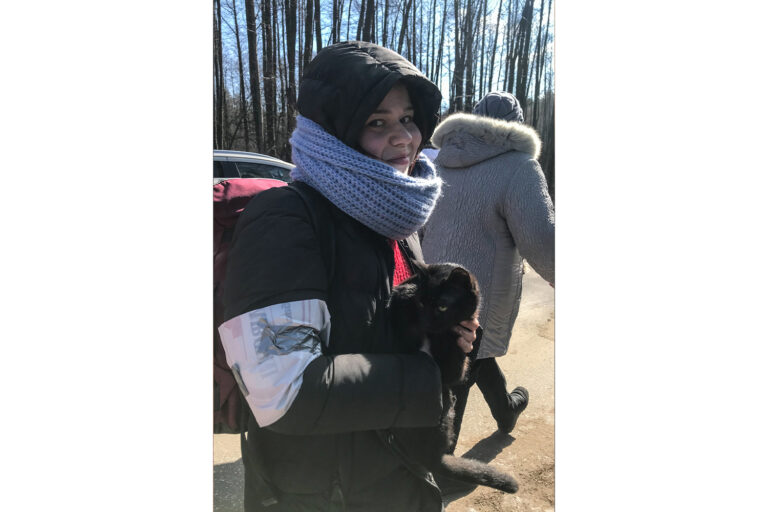
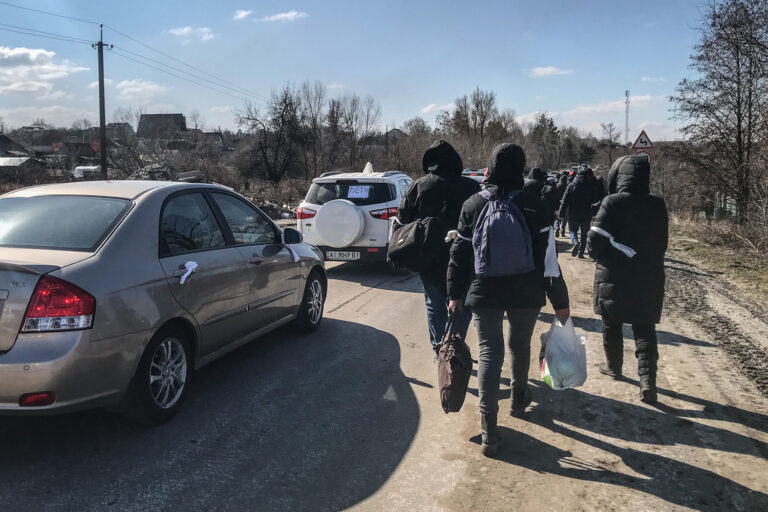
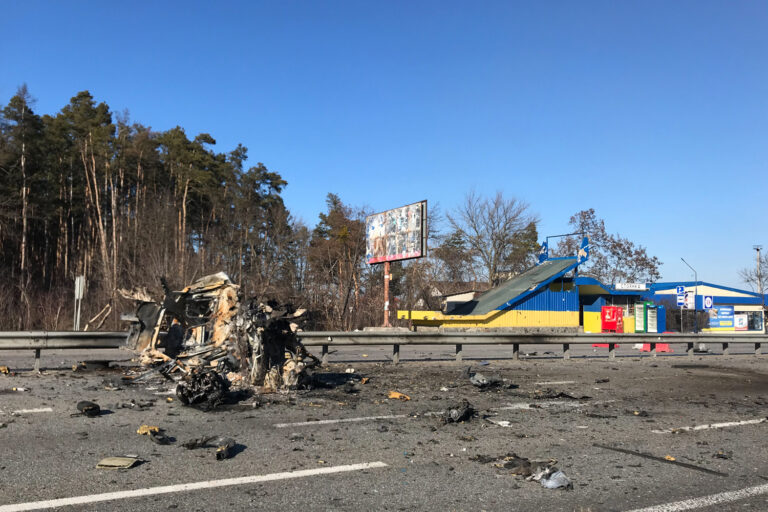
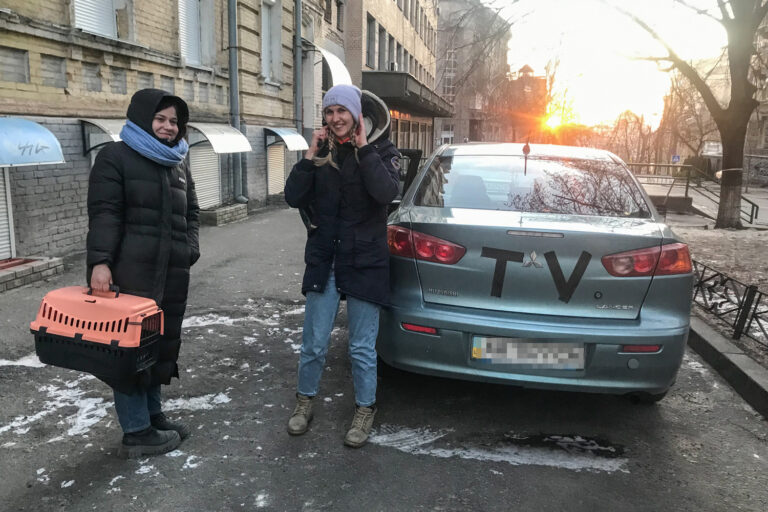
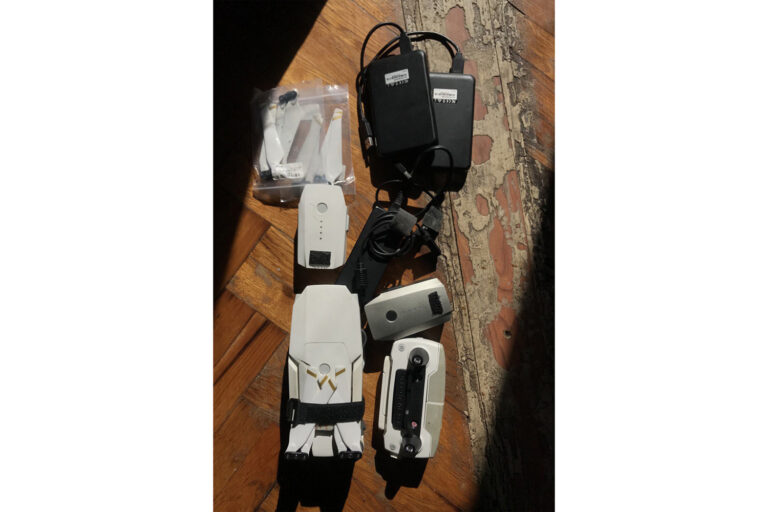
slideshow
We were able to return to our apartment in Bucha at the end of April. We were lucky: although a projectile hit the apartment, there was no fire. In addition, there was looting but it was minimal in our home. Alcohol and some electronics were taken, and some household appliances were put in a bag and covered with a blanket. Apparently, the looters were planning to return for it. My collection of photobooks and artbooks, which I hold very dear, but of which I could not take a single book with me when we evacuated, also survived. The hard drive was also preserved – the only one that I could not take with me because it was too heavy. On February 24, I managed to copy the most valuable data but all the original files remained on it. It was a hard drive with an archive of everything I shot for Mystetskyi Arsenal from 2017 to 2022. Fortunately, I then had the idea to remove it from the table and put it in the desk drawer.
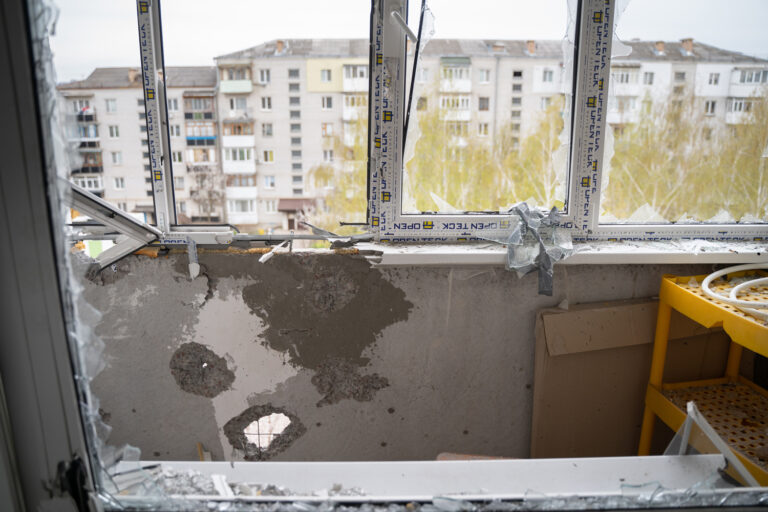
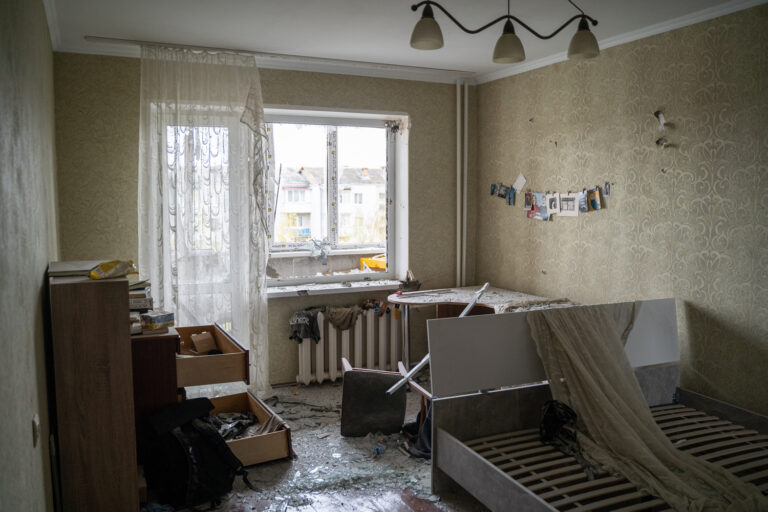
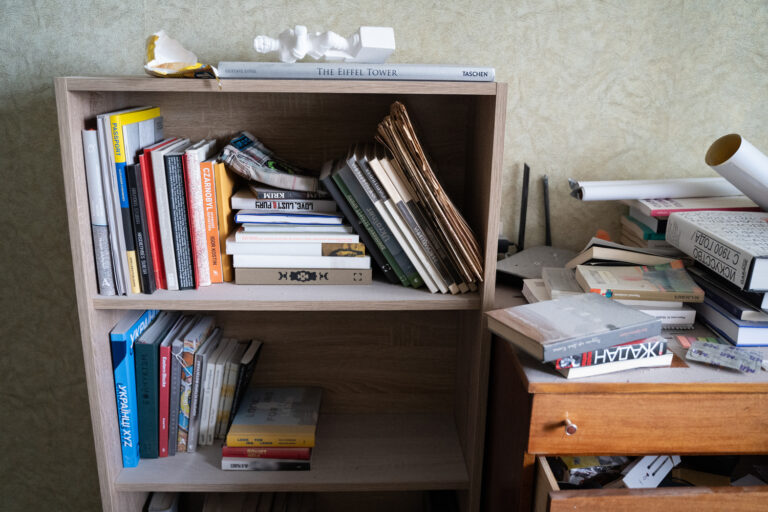
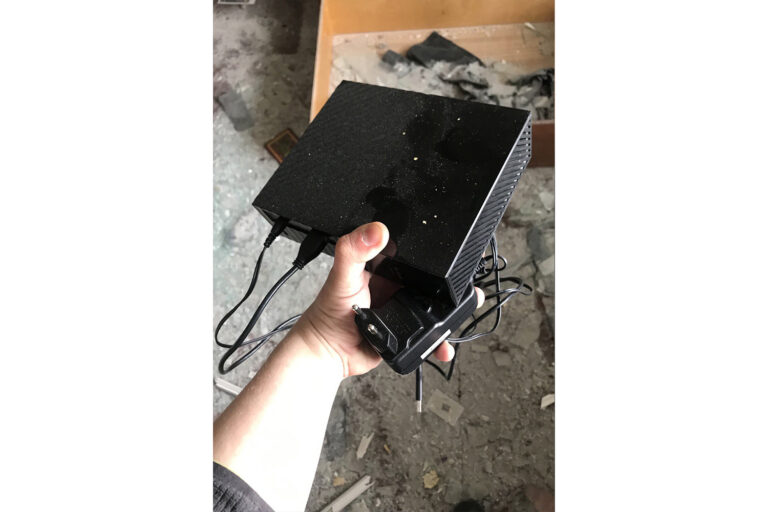
slideshow
On August 5, Oksana and I got married.
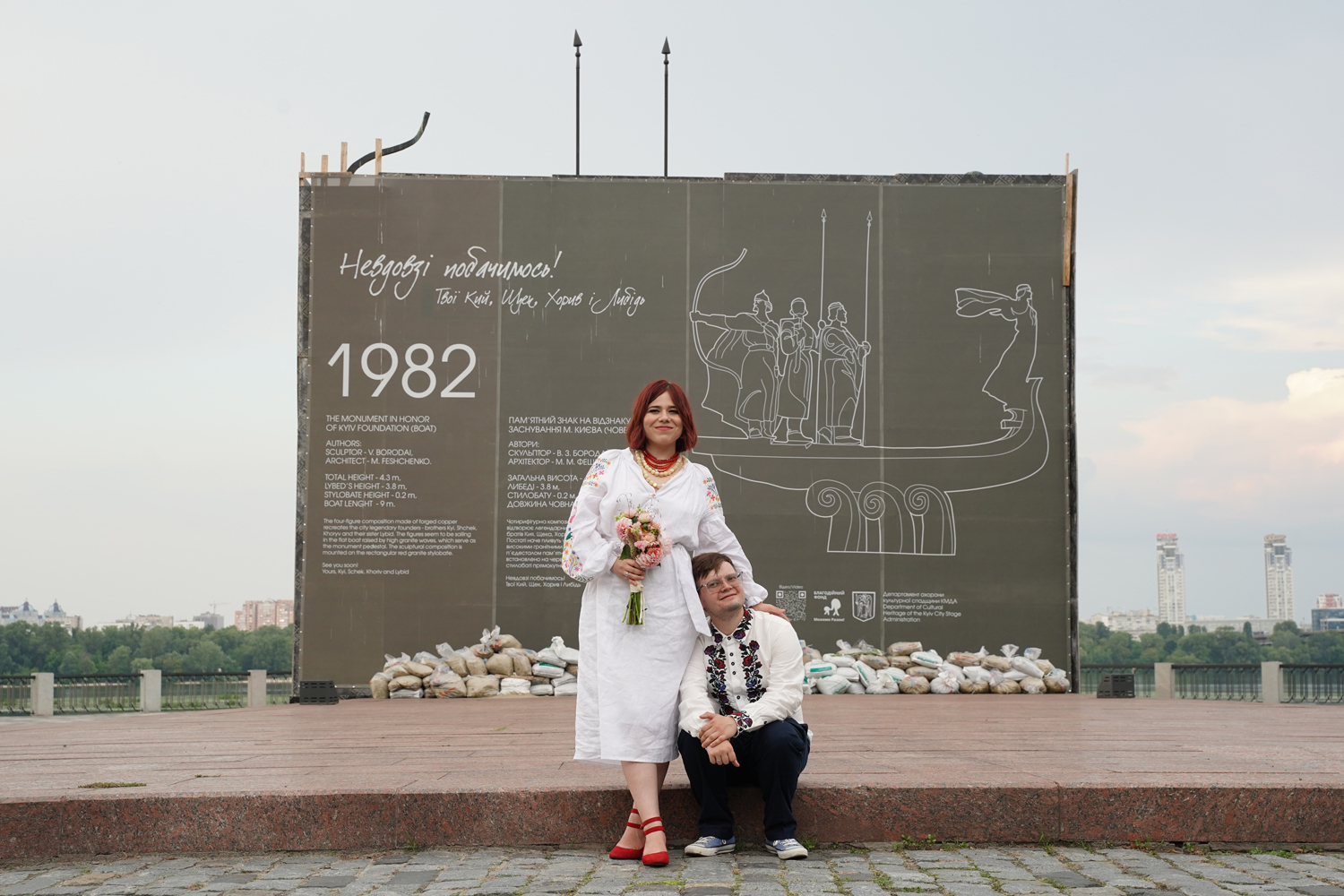
Фото: Андрій Бойко.

